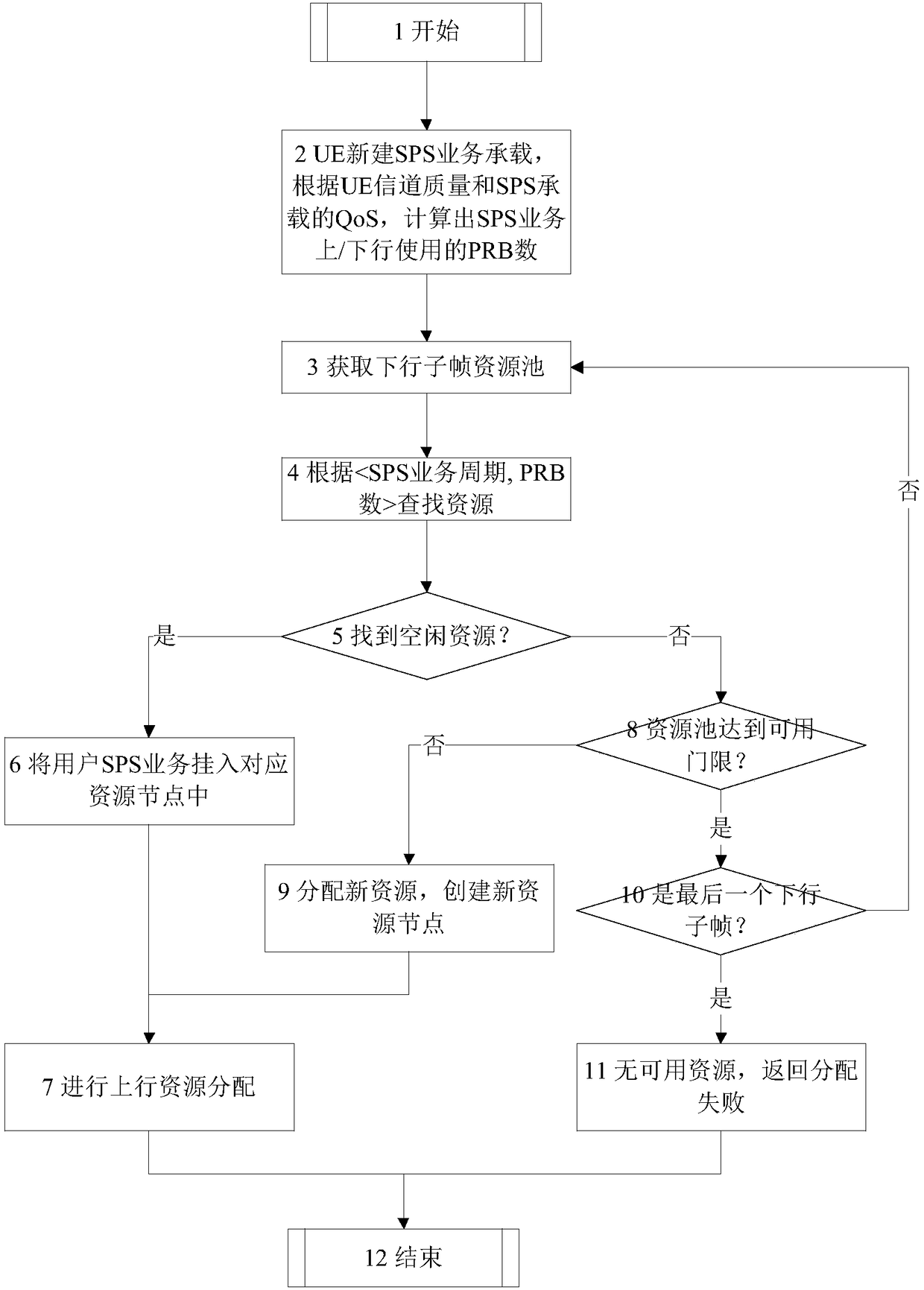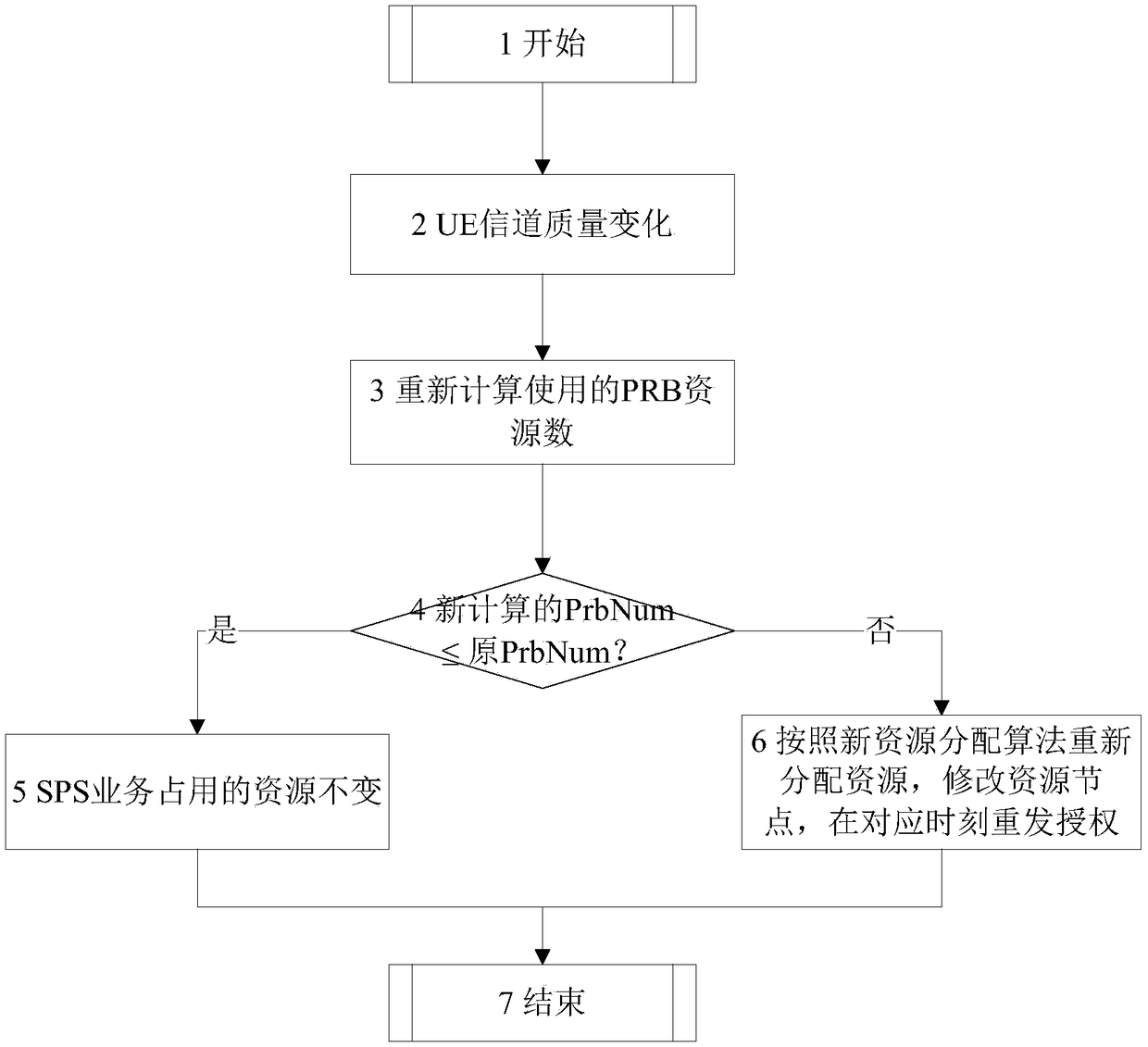A multi-user sps resource allocation method based on qos
A resource allocation, multi-user technology, applied in the field of communication, can solve the problems of chaotic resource allocation, low allocation success rate, and aggravating system load, etc., to achieve the effect of improving allocation success rate, reducing resource fragmentation, and reducing system overhead.
- Summary
- Abstract
- Description
- Claims
- Application Information
AI Technical Summary
Problems solved by technology
Method used
Image
Examples
Embodiment Construction
[0039] The specific implementation manners of the present invention will be further described in detail below in conjunction with the accompanying drawings and embodiments. The following examples are used to illustrate the present invention, but are not intended to limit the scope of the present invention.
[0040] Such as figure 1 As shown, the present invention provides a multi-user SPS resource allocation method based on QoS, and the specific steps are as follows: S1: calculate the number of PRB resources used in the uplink and downlink of the SPS service according to the channel quality of the user equipment and the QoS carried by the SPS; S2: perform downlink Resource allocation, to obtain the downlink subframe resource pool at the moment closest to the current scheduled subframe; S3: In the list of allocated resources in the downlink subframe resource pool, search for the same cycle as the current SPS service, and the number of PRB resources recorded in the node is great...
PUM
 Login to View More
Login to View More Abstract
Description
Claims
Application Information
 Login to View More
Login to View More - R&D
- Intellectual Property
- Life Sciences
- Materials
- Tech Scout
- Unparalleled Data Quality
- Higher Quality Content
- 60% Fewer Hallucinations
Browse by: Latest US Patents, China's latest patents, Technical Efficacy Thesaurus, Application Domain, Technology Topic, Popular Technical Reports.
© 2025 PatSnap. All rights reserved.Legal|Privacy policy|Modern Slavery Act Transparency Statement|Sitemap|About US| Contact US: help@patsnap.com



